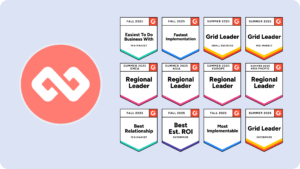As we enter the new digital age of AI and machine learning we face a number of uncertainties, but none greater than that of what the future of work will look like. What are the skills that will not only be needed but also demanded in the workforce?
It’s a big question both employers and employees must address. And who really knows with any great certainty how we can future-proof ourselves and our workforce.
The one thing we can be certain of is the need to be adaptable, agile, and innovative. And the only way we can translate these words into tangible outcomes is by embracing a continuous and self-directed approach to learning.
The capacity to learn independently while leveraging the wisdom and guidance of mentors can be a game changer. Self-directed learning allows individuals to take charge of their own growth and development, while mentoring provides invaluable support and direction. By integrating these two approaches, individuals can truly supercharge their development. Let’s dive deeper into this powerful combination.
What is Self-Directed Learning?
Self directed learning is not a new concept. Malcolm Knowles, in the 1970’s, defined self-directed learning as “a process in which individuals take the initiative, with or without the help of others, in diagnosing their learning needs, formulating learning goals, identifying human and material resources for learning, choosing and implementing appropriate learning strategies, and evaluating learning outcomes“.
This approach empowers individuals to tailor their learning and development to fit their unique preferences and objectives.
The Importance of Autonomy in Learning
Autonomy is at the heart of self-directed learning. When individuals are given the freedom to explore topics they are passionate about, engagement skyrockets. Don’t you feel that you’re always more invested in something you chose to pursue? This sense of ownership not only fosters a deeper understanding of the material but also cultivates critical thinking and problem-solving skills. As individuals navigate their own development paths, they often encounter challenges that require creative solutions, further enhancing their cognitive abilities.
Key Principles of Self-Directed Learning
Several key principles define the framework of self-directed learning:
- Self-Motivation: The drive to learn comes from within.
- Goal Setting: Individuals define their own objectives.
- Resourcefulness: Identifying and utilizing various resources is crucial.
- Self-Assessment: Evaluating progress and understanding is vital for growth.
Understanding these principles can set the stage for a more enriching learning experience. It’s about taking the reins and driving your own learning journey. Moreover, self-directed learning encourages a lifelong love for learning, as individuals become accustomed to seeking out knowledge independently. This adaptability is especially important in our rapidly changing world, where new information and skills are constantly emerging. By fostering a mindset geared towards continuous improvement and curiosity, individuals are better equipped to navigate the complexities of modern life and career landscapes.
The Power of Mentoring in Learning
While self-directed learning builds independence, mentoring adds a layer of support and guidance. Mentors can illuminate the path towards achieving goals and exploring new ideas. But what exactly is the role of a mentor in this landscape?
The Role of a Mentor in Learning
A mentor acts as a guide, providing insights based on their own experiences. They not only share knowledge but also offer constructive feedback. Think of them as seasoned navigators, helping you steer through the often tricky waters of self-directed learning. In addition to sharing their expertise, mentors often serve as sounding boards for ideas, allowing individuals to articulate their thoughts and refine their understanding. This dialogue can lead to deeper insights and a more nuanced grasp of complex subjects, fostering a richer experience.
How Mentoring Enhances Learning Experience
Mentoring enhances the learning experience by:
- Offering Perspective: Mentors provide insights that can reshape a mentee’s approach.
- Encouraging Accountability: With a mentor, individuals often feel more responsible for their progress.
- Creating Networking Opportunities: Mentors can connect mentees with others in their field.
Through these elements, the synergy of mentoring and self-directed learning truly comes to life. Isn’t it reassuring to know that you have someone in your corner as you forge your path? Furthermore, the relationship between a mentor and a mentee can also foster a sense of belonging and community. In environments where collaboration is encouraged, mentors can help their mentees navigate not just professional challenges but also social dynamics, making the journey less isolating. This support can be particularly vital for those who may feel overwhelmed or unsure about their direction, as it instills confidence and encourages exploration.
Moreover, the impact of mentoring extends beyond individual growth; it can influence entire ecosystems. When mentors actively engage with mentees, they contribute to a culture of continuous improvement and lifelong learning. This ripple effect can inspire mentees to become mentors themselves, perpetuating a cycle of knowledge sharing and support that enriches the community. As such, mentoring becomes not just a personal journey but a collective endeavor that enhances the experience for everyone involved.
Integrating Self-Directed Learning and Mentoring
So, how do we blend these two powerful approaches effectively? It requires thoughtful integration to create a harmonious learning environment.
The Synergy between Mentoring and Self-Directed Learning
The magic happens when the autonomy of self-directed learning marries the insightful guidance of mentors. This synergy fosters a dynamic learning environment where individuals can explore independently while receiving support when needed. The collaboration can help individuals think critically and navigate challenges with confidence.
Combining Mentoring with Self-Directed Learning
To effectively combine these approaches, consider these initiatives:
- Regular Check-ins: Set up consistent meetings to discuss progress and challenges.
- Goal Alignment: Ensure that both the mentee’s and mentor’s goals are in sync.
- Encourage Open Communication: Foster an environment where questions and feedback flow freely.
Utilizing these strategies can ensure that the mentoring relationship positively impacts the self-directed learner’s journey.
Using Some Constraints to Allow People to Thrive
There is no doubt that technology has a role to play in making learning more accessible and more relevant. However, in working towards creating a culture of learning, leaving it simply up to all individuals to opt-in and drive their own learning in the first instance is ambitious.
If we are opening learning opportunities up to all, not just the high performers, we can’t assume they all have the same motivation, determination or capacity to learn in the same way. Having a smorgasbord of learning opportunities available to employees can be a little overwhelming and sometimes the paralysis of choice stops us from getting started.
This is where mentors come in. They can serve as a learning counsellor – someone to help identify where the greatest learning opportunities are and help navigate a path to get there.
Self-Directed Learning and Mentoring: Why Both?
Allowing an inclusive opt-in approach to learning is only half way there in ensuring we are going to have the right skills needed for future work. Without the right structure, constraints and guidance organisations and people are at risk of wasting time, effort and money on developing redundant skills. The combination of self-directed learning and mentoring delivers numerous advantages that can transform individual learning experiences.
Large companies have long recognised this when applying learning frameworks to their top talent, often overlapping and supporting their professional development program with a career coach or mentor. While a valid method, the investment required to support this approach to learning is not scalable. But you know what’s scalable? Mentoring.
Deploying mentors to support individuals in their learning journey is complementary to the very core of what a mentoring relationship is all about. Taking the time to understand one’s goals, objectives and desires is critical in designing an appropriate learning path that is going to deliver tangible and relevant outcomes for both the organisation and the individual.
Final Thoughts
Self-directed learning, enriched with mentoring, cultivates personal growth and improves learning outcomes. Individuals develop confidence and skills that extend beyond the sphere of their industry or area of specialization—thinking critically, communicating effectively, and navigating their careers become second nature. Those who engage in a mentoring relationship while pursuing self-directed options often see significantly improved outcomes. They not only retain information better but also apply their knowledge in innovative ways.
Self-directed learning supercharged with effective mentoring creates an enriching development experience that empowers individuals to take charge of their learning while benefiting from the wisdom of those who have traveled the path before them.
Ready to elevate your organization’s learning and development with the power of mentoring? Discover how Mentorloop can streamline your mentoring program, from the initial setup to measuring its success. Our platform is designed to support HR and L&D Leaders, Functional Leaders, Community Managers, and more in creating impactful mentoring relationships. If you’re part of a Charity or Nonprofit, be sure to check out our Community Support Program. Take the first step towards fostering a culture of self-directed learning and growth Book a Demo with Mentorloop today!




